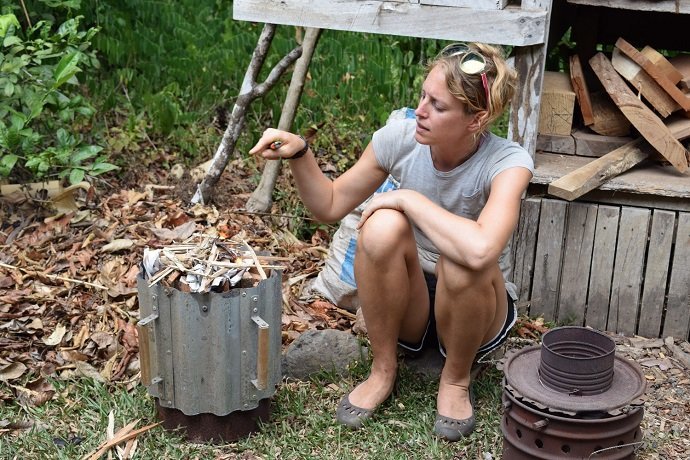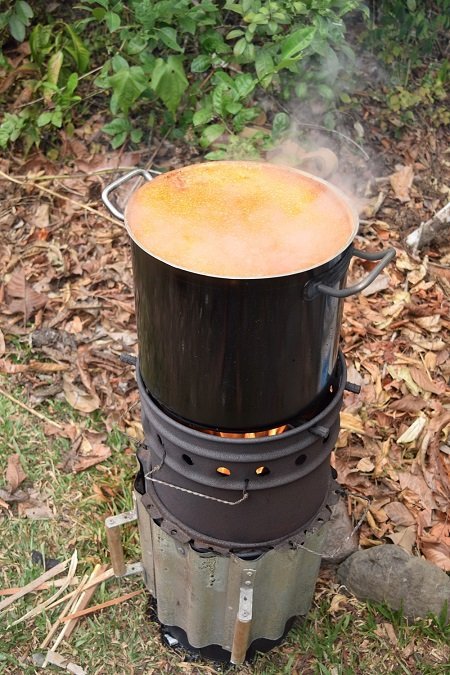Tropical Orchard Establishment Practices and Concepts: Part 2 of 3
Biochar Production
We make a small amount of biochar yearly to be used in our nursery potting soil and applied to our garden beds. Biochar has been studied extensively over the past 25 years and has proven to be an effective soil fertility strategy, in particular in the tropics. We use two different biochar systems. The first is a cook stove called an Estufa Finca. This was developed by our friend Art Donnelly of SeaChar.org. The second is a larger retort kiln called a TLUD (Top-Lit Up-Draft) made of two 55 gallon metal drums.Biochar is a fascinating soil amendment that inspires much disagreement and conversation. For us, we are mostly interested in leveraging the unique physical and chemical properties of biochar to reduce leaching of nutrients, improve soil structure, buffer our pH, and provide host sites for microorganisms. Biochar in general has a negative molecular charge which binds well to nutrients and it’s physical structure provides endless nooks and crannies for a diversity of microbial life to seek shelter from predators.
We primary use fruit tree and bamboo prunings for our biochar feed stock. We avoid nitrogen rich feed stock as this nitrogen volatilizes during the combustion process. After a burn, which can be seen in the following photos, the biochar is crushed and then charged. As the burn process removes most nutrients from the remaining carbon, it is most effective to soak the biochar in a nitrogen rich liquid. Typically we use effluent from our methane biodigestors.



Overall biochar does not make up a huge part of our day-to-day work. I find it challenging to find the time and physical space for all the necessary harvesting, handling, and drying of feedstock. This year we will make 60 to 120 kilos of biochar for our gardens.





1 comment:
One thought about using biochar in potting mix. I make and use a lot of biochar, but have stopped using it in potting mix after experiencing some damping problems. I think that the problem is that biochar is capable of retaining so much water that is there is too much in the mix, you end up with problems. Nothing scientific here, just enough bad plantings that I decided to switch mixes.
Post a Comment